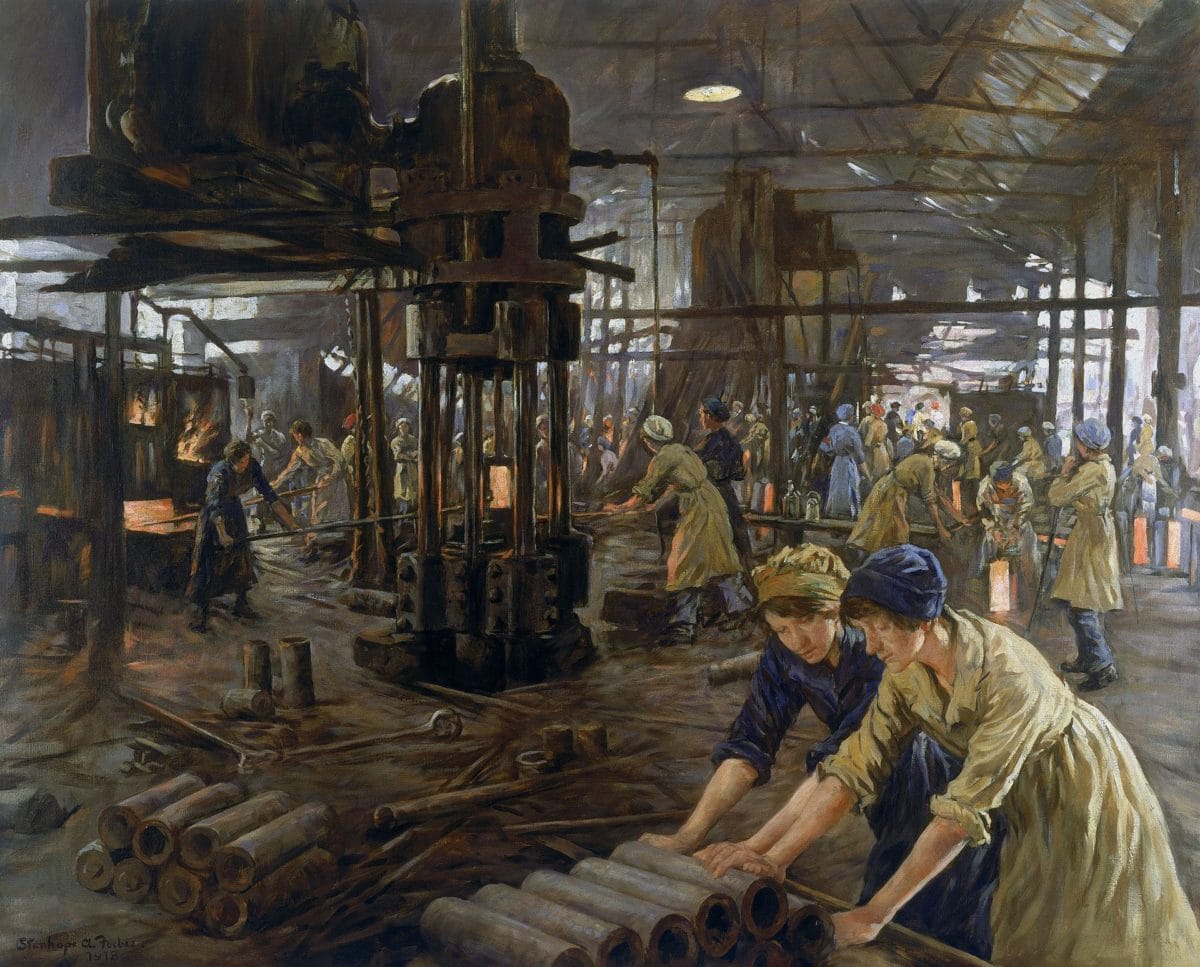In the nineteenth century the painter faced a formidable competitor in depicting the physical realities of nature and life—the photographer.
After Louis J. M. Daguerre (1789-1851) made the daguerreotype commercially possible, the science and art of photography developed until, through the work of the American George Eastman (1854-1932), roll film made it feasible for each person to be an artist.
Thus painting moved in two directions, either toward the meticulously exact and technically skillful reproduction of scenes in direct competition with the photograph, or toward impressionism as an expression of the artist’s inward feelings about the subject.
The rebellion against academic painting, begun by Delacroix, continued in the mid-nineteenth century with the French artists Honore Daumier (1808-1879) and Gustave Courbet (1819-1877), who also protested against the values of laissez-faire capitalism and the social mores of the middle class.
Daumier exploited to the full the new technological developments that made it possible to mass produce inexpensive copies of his lithographs. With moral indignation and savage bite, Daumier exposed the evils of French society. Courbet upset the academic painters by taking commonplace subjects— wrestlers, stone cutters, nudes who bore no resemblance to classical nymphs—and portraying them without attempting to prettify them.
The hostility of the academics reached a peak in 1863, when canvases by followers of Courbet were refused a showing in the annual Paris Salon. The rejected artists countered by organizing their own Salon des Refuses, which gained the backing of Emperor Napoleon III.
That science might encourage as well as impede artistic revolution was evident in the case of the impressionists, whose name was invented by hostile critics after viewing a painting entitled Impression: Sunrise by Claude Monet (1840-1926), the leader of the school.
The impressionists learned from physics that color was a complex phenomenon put together by the human eye from the prismatic reflections of nature. They proposed to break both light and shadow into their component colors and then allow the viewer’s eye to reassemble them. They painted landscapes and seascapes for the most part, using thousands of little dabs of color; the result, when seen from up close, is hardly more than a formless mesh of color, but, when viewed from the proper distance, it is magically transformed into a recognizable scene flooded with light.
Two other qualities augmented the revolutionary impact of impressionist painting. One was the abandonment of traditional conventions of symmetry in favor of an arrangement that put the principal figure well to one side. This technique was employed with telling effect by the Frenchman Edgar Degas (18341917) and the American James McNeill Whistler (18341903).
The other departure was a return to subjects evoking everyday life. Milliners, prostitutes, card players or solitary drinkers in a cafe, cabaret and circus performers, and ballerinas in rehearsal populate the canvases of Degas, Henri de Toulouse-Lautrec (1864-1901), Auguste Renoir (1841-1919), Vincent Van Gogh (1863-1890), and other masters. Most of these artists are post-impressionists, in that they went beyond impressionism to further experiments.
Paul Cézanne (1839-1906) in particular thought impressionism too obsessed with light at the expense of the geometrical and architectural qualities also to be found in nature, and he proposed to restore these qualities with blocks or chunks of color. His was perhaps the single greatest influence in modern painting.

